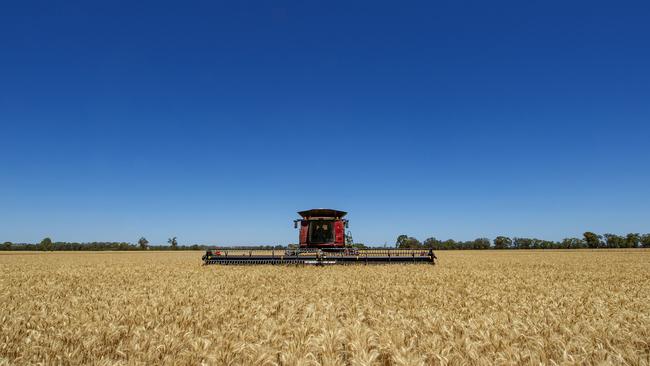Grain crops forecast: Rabobank predicts bumper harvest
Australia’s bumper winter harvest is forecast to come in just 5 per cent shy of last year’s near-record crop.

Australia’s bumper winter harvest is forecast to come in just 5 per cent shy of last year’s near-record crop, according to Rabobank.
In its Australian Winter Crop 2021-22 Production, Price and Inputs Forecast report released today, the agribusiness bank estimated the nation would harvest 52.87 million tonnes of winter grains, oilseeds and pulses this season.
Although a smaller crop than last year, it would be 25 per cent higher than the five-year average.
The forecast comes in two million tonnes less than the Australian Bureau of Agricultural and Resource Economics and Sciences forecast released five weeks ago.
Rabobank’s estimate of the national canola harvest, at 5.16 million tonnes, is higher than the ABARES’ estimate of 5.03 million tonnes.
That would mean it was 14 per cent higher than last year and 48 per cent more than the five-year average.
The bank has estimated wheat production at one million tonnes lower than the ABARES estimate at 31.9 million tonnes, or 4 per cent lower than last year, but 35 per cent higher than the five-year average.
Rabobank’s barley production forecast is also slightly lower than the ABARES estimate at 11.7 million tonnes, or 10 per cent less than last year but 7 per cent more than the five-year average.
Report co-author, Rabobank agriculture analyst Dennis Voznesenski said Australia’s second consecutive very large winter crop “comes at an opportune time for local growers, with global shortages and high prices for grains and oilseeds”.
“Short global supplies of grains and oilseeds will continue to support Australian prices over the year ahead,” he said.
“And although global prices can be expected to soften as new crops in different regions around the world come into play, the uncertainty that exists around seasonal conditions in grain growing areas and the process of global grain stocks rebuilding will keep prices at least above the range of the last six to seven years.”
The report notes favourable growing conditions in Australia have seen expectations of increased amounts of high-protein wheat in Queensland, South Australia and Western Australia this harvest — “timed perfectly” with a current global shortage of high-protein wheat, due to drought in North America.
Other factors of note for this year’s winter crop include a lower supply of malting quality barley – due to a reduction in barley planting, and particularly malt varieties – and less grain baled for hay because of export concerns due to a largely-closed Chinese hay market.
“There is also a proportion of last year’s record east coast harvest – 10 to 15 per cent – that remains on farm,” Mr Voznesenski said.
“And this will compete with the coming crop for storage space and mean more delivery and price pressure during harvest.”
Rabobank forecasts 2021-22 winter crop production to be 18 per cent higher in both WA and Queensland off the back of improved rainfall over the growing season in both states.
NSW production is expected to be 14 per cent lower than last year’s record harvest in the state, but still nearly 70 per cent more than the five-year average.
South Australia’s crop is forecast to decline 10 per cent year on year, due to less favourable planting conditions and patchy rainfall, while Victoria is set to record the largest decline in production — 24 per cent lower, primarily due to drier conditions in the western part of the state.




